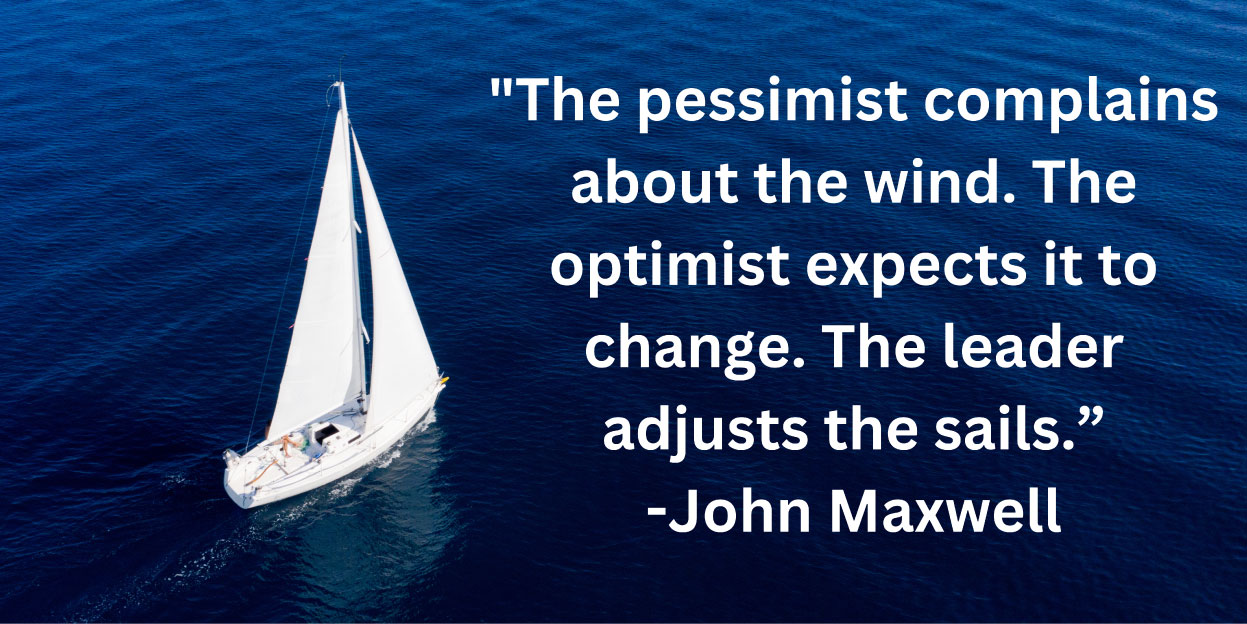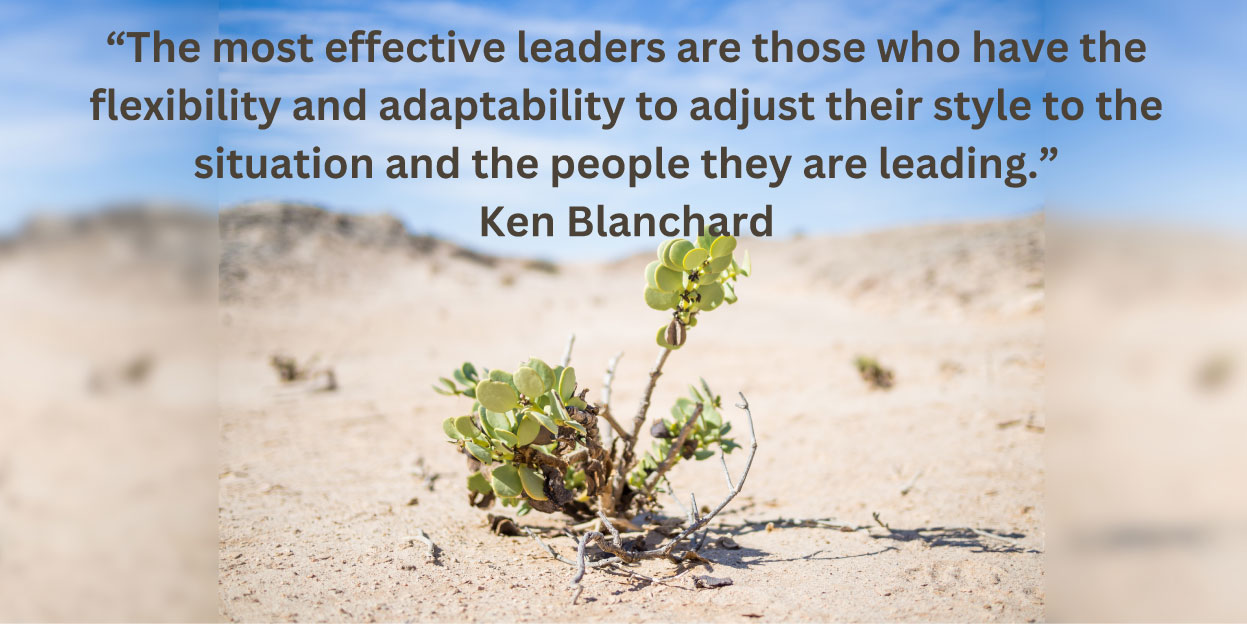The Myth of Leadership Styles: Leading with Compassion and Adaptability
This blog has been written by our friend and BOxD Consultant, Alison Godfrey. Over the past 45 years, Alison has been both an entrepreneur with successful exits and an experienced corporate C-suite executive. Alison has worked closely with some of the world’s most influential individuals in technology, business leadership, and philanthropy. She is known as a leader with heart, generous with insight, and driven to live on the edge, and we’re excited to have her contribute to our blogs.

Have you ever wondered if there’s one “right” way to lead? I’m sure you’ve read many think pieces on the “best” leadership styles, from the authoritarian to the collaborative. Some popular models, like Ken Blanchard’s Situational Leadership, even suggest adapting your approach based on the maturity level of your team. While these frameworks can offer valuable insights, it’s crucial to remember that leadership is not a one-size-fits-all game.

The Myth: Different leadership styles are inherent and necessary for different situations.
The Reality: Effective leadership revolves around compassion and adaptability, not a predefined style.
So, what does it mean to lead with compassion and adaptability?
Imagine yourself leading an orchestra. You wouldn’t expect each instrument to play in the same way, would you? Each violinist, cellist, and percussionist has a unique role and requires specific guidance to contribute effectively to the overall symphony. As a leader, your job is to understand and adapt your approach to bring out the best in each individual and ensure the entire team plays in harmony. Leading in this way requires that we remember two things:
People are complex. Each team member brings unique experiences, skills, and needs to the table. Treating everyone the same, regardless of their individual growth and development stages, can hinder their potential and stifle innovation.
Situations are dynamic. Challenges and opportunities constantly evolve. Relying solely on a specific style, even if it worked in the past, may not yield the best results in new situations.
Let’s dive a little deeper into compassion, adaptability, and how to grow in these traits to become the best leader we can be.

Compassion
At its core, leading with compassion is about taking a human-centered approach. It requires understanding and connecting with people beyond the work that needs to be done—recognizing their needs, aspirations, and the challenges they face. Compassion in leadership means fostering an environment where empathy helps to inform decisions, where leaders genuinely care for the well-being of their teams and act with kindness, candor, and understanding. This compassionate approach builds trust, nurtures a positive and inclusive culture, and boosts psychological safety, which has been proven to drive collective growth and resilience.
Indicators of Compassionate Leadership
- Empathetic Engagement: Compassionate leaders consistently demonstrate the ability to empathize with team members, being open to hearing and understanding their feelings and perspectives. They show genuine concern for others’ well-being and are approachable and responsive to the needs and challenges their team faces.
- Open and Honest Communication: They prioritize clear, transparent communication and encourage an environment where team members feel safe to express their thoughts, concerns, and ideas. Compassionate leaders listen actively and communicate with kindness and respect, fostering trust and openness.
- Acts of Service: Actions speak louder than words, and compassionate leaders back up their compassion with concrete support. This can be through mentoring and coaching, providing resources for professional growth, or offering flexible solutions to personal challenges, showing a commitment to the development and well-being of their team.
- Recognition and Appreciation: Compassionate leaders recognize and appreciate the contributions of each team member, celebrating successes and acknowledging efforts in meaningful ways. They understand the importance of positive reinforcement in building confidence and motivating their team.

Adaptability
Adaptability is required to help navigate modern organizational life. It’s about being flexible in thought, strategy, and process, being willing to pivot in response to new information and changing circumstances. Fostering adaptability requires a mindset open to learning, unlearning, and relearning—a commitment to evolution that ensures sustainability and relevance.
Indicators of Adaptable Leadership
- Flexibility in Decision-Making: Adaptable leaders are willing to alter their decisions and strategies in response to new information or shifting circumstances. They are not rigidly attached to plans but are open to change when it benefits their team and objectives.
- Continuous Learning: They have an insatiable curiosity and commitment to personal and professional growth, constantly seeking new knowledge and skills. This learning mindset enables them to stay ahead of industry trends and adapt to changes more effectively.
- Resilience in the Face of Setbacks: The ability to bounce back from failures and setbacks is a key indicator of adaptability. These leaders view challenges as opportunities for growth and learning, maintaining a positive attitude and motivating their team to persevere.
- Proactive Change Management: Adaptable leaders anticipate change and prepare their team for it. They are skilled at navigating uncertainty and leading their team through transitions, ensuring everyone remains focused and aligned with the evolving goals and vision.

So how do we cultivate compassion and adaptability as leaders? Here are a few tips to get you started:
High Emotional Intelligence (EQ) is key: Develop your ability to understand and manage your own emotions, as well as recognize and respond effectively to the emotions of others. This allows you to connect with your team members on a deeper level and provide the support they need.
Active listening is essential: Go beyond simply hearing; practice truly listening to understand your team members’ perspectives, concerns, and needs. Ask open-ended questions, acknowledge their feelings, and create a safe space for open communication.
Embrace continuous learning: The world is constantly changing, and so should your leadership approach. Be willing to learn new strategies, stay updated on emerging trends, and be open to feedback from your team.
Focus on shared goals: While individual needs are important, remember the bigger picture. Align your team towards a common vision and purpose, and empower them to contribute their unique strengths towards achieving collective goals.
Seek feedback: Regularly ask your team for feedback on your leadership style and communication approach. Their perspective can offer valuable insights into your strengths and areas for improvement.
Lead by example: Demonstrate the behaviors you expect from your team. Be open, honest, and willing to learn and adapt alongside them.
Leading with compassion and adaptability isn’t always easy, but it allows you to create an environment where everyone feels valued, empowered, and motivated to contribute their best.
 Ready to Talk Now?
Ready to Talk Now?